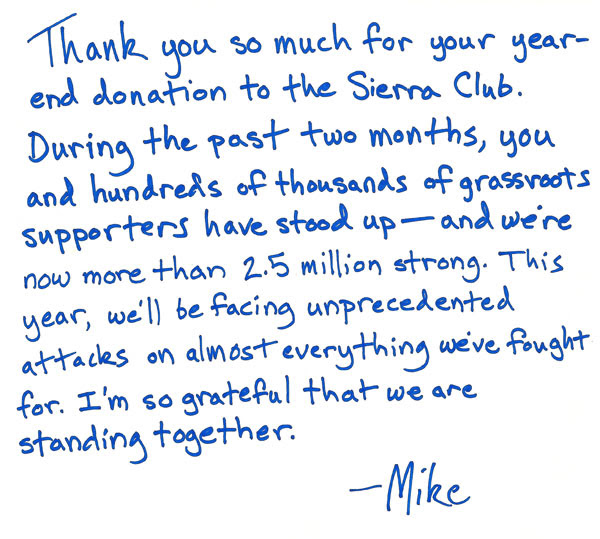
By Kerri Moore
It’s hard to raise money and it’s more difficult if you have limited resources. In this post, Kerri Moore of Booster has some low-cost fundraising ideas for you. Some don’t even involve asking for money but emphasize building relationships with the donors you already have.
Low-cost fundraising isn’t just about saving your nonprofit some extra cash.
After all, a cost can be:
- The time it takes to plan and execute a fundraising campaign or event.
- The labor of your staff, volunteers, and fundraising team.
- Net fundraising expenses, which you can measure as cost per dollar.
This might sound paradoxical, but to keep all of your costs low, your organization will need to make an investment. 1
An investment in your donors, that is.
It’s much more expensive to acquire new donors than it is to work with the supporters you already have.
That’s why building up donor relationships is the best way to keep fundraising costs low.
Check out these six innovative ideas that focus on your nonprofit’s relationship with your donors:
- Brand t-shirts and products.
- Strategize with social media.
- Host a thank-a-thon.
- Leverage your supporters.
- Host a community drive.
- Appeal for recurring donations.
Let’s get started with number 1.
1. Brand t-shirts and products.

Low-cost product fundraisers are an effective way to entice donors to give without breaking your budget.
But to create long-term low-cost fundraising, you’ll need to brand your products so that donors become invested in your organization.
T-shirts are one of the most effective products, but there are plenty of options that can suit your organization’s needs, whether it be a school, church, or traditional nonprofit. 2
That said, t-shirts for your fundraising campaign allow supporters to:
- Support your organization with a donation.
- Promote your nonprofit by wearing the shirt and spreading the word.
- Remind your supporters of your nonprofit and their connection to your cause.
That’s why it’s vital that you brand your t-shirts or products with the name of your fundraising campaign and/or your nonprofit’s name and logo.
Make your cause tangible on the shirts, so that anyone who sees them can understand your message. 3
Since t-shirts can be extremely affordable, or even free (with a cost per shirt sold, rather than an upfront charge), they’ll help keep your costs low. 4
2. Strategize with social media.

With rising print costs, communicating and advertising over mail can be a strain on your organization’s budget.
While we would never advise that you forgo print communication channels, a strong social media strategy can supplement your print efforts and diminish your donor acquisition costs.
After all, social media allows your supporters to share information about your nonprofit with their own networks. Many peer-to-peer fundraising campaigns capitalize on social media for this very reason.
Producing quality material for social media is important and the internet offers plenty of free or affordable software to help you advertise on the web. 5
Social media integration for your online fundraising platform is important, and mobile-friendly pages are a must. 6
Beyond the technical basics, how can you use social media to keep your costs low?
- Spread awareness with a hashtag. A hashtag is the perfect tool to advertise your fundraising campaign, and they’re free to make! You will, however, want to take the time to choose a hashtag that encompasses your campaign. Something simple, something catchy, an alluring alliteration — all of these factors are elements of a strong hashtag.
- Host a soft launch. One of the most cost-effective means of building hype for your campaign is hosting a soft launch, where your supporters and board members donate to your campaign before it’s launched to the public. A soft launch taps into social psychology. If people see that others have already donated, then they’ll be more inclined to give themselves.
- Live tweet your campaign. Twitter allows you to update your followers on your fundraising campaign — for free! A social media coordinator can post live updates about your campaign. A little wit goes a long way. You could, for example, tie your campaign into current, trending topics to attract retweets and favorites.
Creating an effective social media strategy is the perfect low-cost way to advertise your campaign and connect with more supporters.
3. Host a thank-a-thon.

If you’ve heard of walkathons, you’ll get the gist of a thank-a-thon. 7 Your fundraising team, as well as volunteers, board members, and supporters, come together for an hour or two of pure gratitude to thank people for their recent donations.
If you can’t call everyone during the thank-a-thon, call major or mid-level donors with major donor potential. Calling first-time donors often results in repeat gifts.
This fundraising strategy does not involve asking for money.
Instead, you’re building stronger donor relationships in a single, deliberate effort, which will ultimately benefit your fundraising down the road. 8
A thank-a-thon is a low-cost activity that you can modify to suit your needs.
Besides making calls, you can, for example:
- Hand-write thank you notes.
- Thank each social media supporter in the comments.
- Have each team member hold up a sign with a donor’s name, take a picture, and post it to your campaign’s Facebook page.
The possibilities are endless.
The goal is to go beyond your typical thanking strategy to ensure that your donors feel more appreciated at your organization than they do anywhere else.
4. Leverage your supporters.

Keeping your fundraising costs low means using the resources you already have to your advantage.
You can reach out to your supporters directly, or you can perform preliminary research and make targeted appeals. 9
Here are just a few ideas of how you can leverage your supporters:
- Board members can host events. A fancy, intimate event is a staple of major donor relations, but venues, food, and entertainment costs can add up quickly. A board member may be able to offer a nice property or valuable connections that can cut overhead costs. Take 10 minutes during a meeting to have each member write down three possible contributions that they could offer.
- Hold a skills clinic. Everyone has talent. Your organization is probably full of people with unique skill sets. A skills clinic allows your supporters to contribute to your organization and the community, all while having fun at a unique and cost-effective event.
- Promote matching gifts. Many companies offer matching gifts opportunities, where a company will match their employees’ gifts. Taking a look at your supporters’ business affiliations can indicate who’s sitting on a donation that could be doubled. You can also promote matching gifts to your entire organization so that everyone is aware of the opportunity.
Whether you’re looking for business affiliations or valuable connections, keeping an organized database of your supporters can help you identify the people with the potential to offset costs — and further your cause! 10
5. Host a community drive.

A community drive not only benefits your nonprofit, but it helps your community!
There are plenty of different ways that this type of campaign can work, but the concept is the same: supporters supply the products, and your nonprofit makes a nearly pure profit.
Here are some ideas for community drives that your organization can try:
- Bottle and can drive.
- Upcycled artwork.
- Prom dress drive.
- Used batteries.
- Old cell phones.
- Used book sale.
You can even turn some of these drives into an event or an auction to promote more fundraising. 11
Ultimately, your product drive should help people in your community or the environment.
The most important part of pulling off a community drive is spreading awareness so that people donate their recyclables or gently used products.
6. Appeal for recurring donations.

A fundraising campaign can reap great rewards for your nonprofit, but part of keeping your cost-to-benefit ratio in good territory means planning for long-term success.
Recurring donations are a means for donors to continue their support after your fundraising campaign ends.
Creating a strong appeal for recurring donations can encourage supporters to make more than a one-time, in-the-moment donation when they give to your campaign. 12
You can, for example, emphasize the simplicity and ease of recurring donations (especially at churches, where recurring tithes are an easy way for supporters to make their weekly contributions). 13
Or, you can craft your campaign’s focus around recurring donations. For example, you can suggest that supporters give up one $30 meal per month to feed hungry children for 30 days. Hashtag with #30for30, and you’re set for low-cost fundraising!
Are you ready to innovate your low-cost fundraising? Well, don’t forget to keep your donors in mind.
Their relationships with your nonprofit are priceless, so building strong connections is the most cost-effective fundraising you can do!
Sources
- https://anngreennonprofit.com/2015/11/24/make-an-investment-in-your-donors/
- http://blog.booster.com/school-fundraising-ideas/
- https://anngreennonprofit.com/2015/03/04/steer-clear-of-generic/
- https://doublethedonation.com/product-fundraising-ideas/
- https://anngreennonprofit.com/2012/06/27/choose-quality-over-quantity-part-two-social-media/
- https://doublethedonation.com/nonprofit-software-and-resources/online-fundraising-guide/
- http://blog.booster.com/walkathon-guide/
- https://anngreennonprofit.com/2015/07/13/dont-treat-thanking-your-donors-as-an-afterthought/
- http://www.donorsearch.net/
- https://www.360matchpro.com/top-matching-gift-companies/
- http://www.bidpal.com/charity-auction-item-ideas/
- https://anngreennonprofit.com/2015/09/02/how-to-create-an-a-appeal-letter/
- https://www.atpay.com/church-management-tips/
Kerri Moore is the Director of Marketing at Booster, Created by CustomInk. She  and her team help create content aimed at maximizing organizers’ fundraising potential and furthering their mission to raise awareness for the cause or passion that means the most to them.
and her team help create content aimed at maximizing organizers’ fundraising potential and furthering their mission to raise awareness for the cause or passion that means the most to them.






 Valentine’s Day is coming up and it’s a perfect opportunity to thank your donors and show how much you appreciate their support. Okay, maybe you think doing something for Valentine’s Day is hokey, but you should still do something fun and creative to show appreciation this month. The holidays are over, winter isn’t, and the world doesn’t feel like a very nice place right now, so we could all use a little pick-me-up.
Valentine’s Day is coming up and it’s a perfect opportunity to thank your donors and show how much you appreciate their support. Okay, maybe you think doing something for Valentine’s Day is hokey, but you should still do something fun and creative to show appreciation this month. The holidays are over, winter isn’t, and the world doesn’t feel like a very nice place right now, so we could all use a little pick-me-up.






 and her team help create content aimed at maximizing organizers’ fundraising potential and furthering their mission to raise awareness for the cause or passion that means the most to them.
and her team help create content aimed at maximizing organizers’ fundraising potential and furthering their mission to raise awareness for the cause or passion that means the most to them.